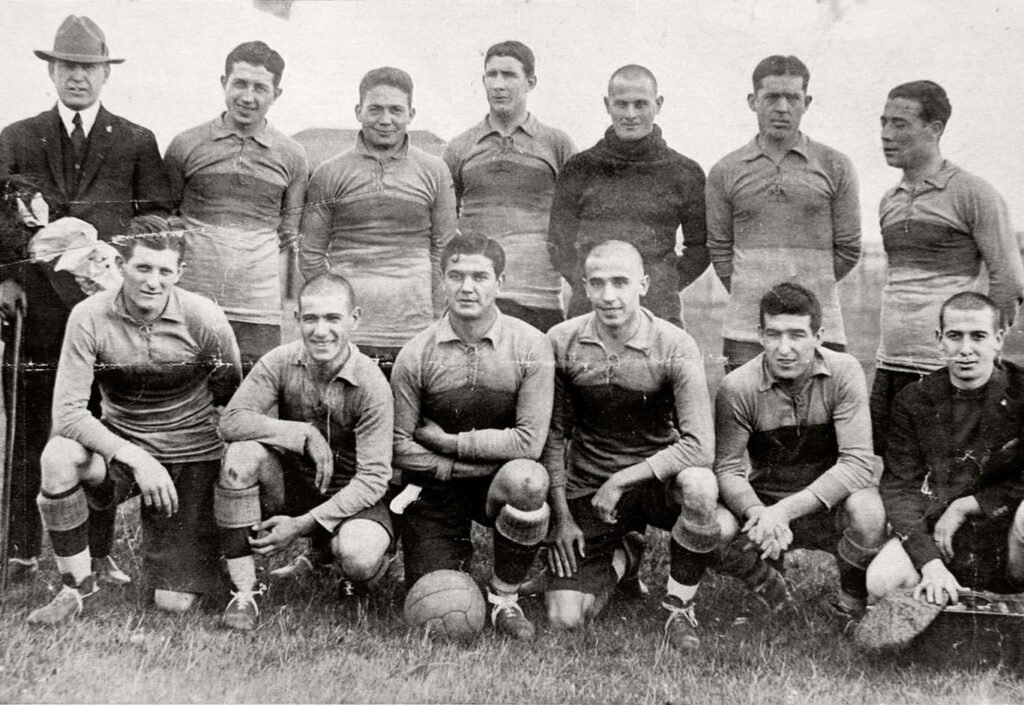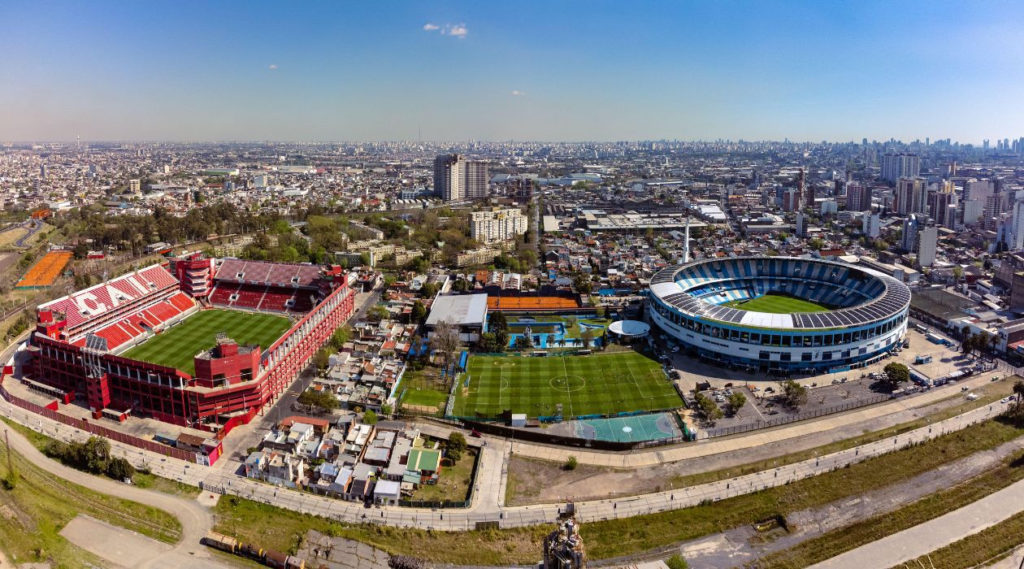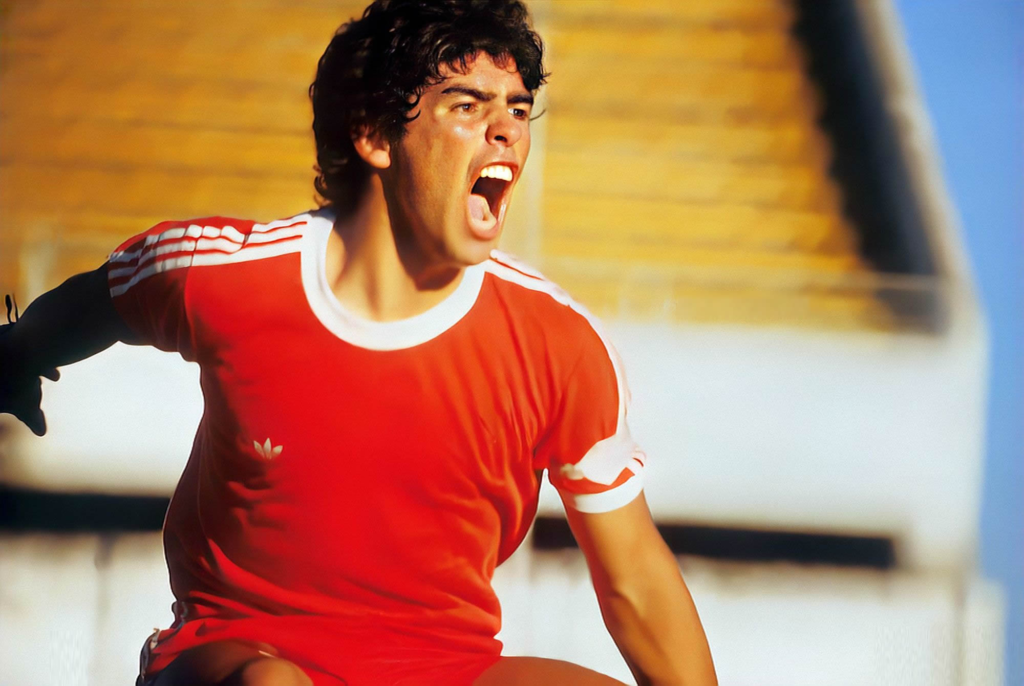Buenos Aires is known worldwide as a football capital, where the sport is woven into the fabric of everyday life. It is the city that shaped legends like Diego Maradona and is home to some of the best teams in South America, making it an essential experience for any visitor. Understanding Buenos Aires’ soccer scene is key to experiencing the city like a local. This guide will provide an overview of the soccer teams, stadiums, safety tips, how to get tickets, and more, offering everything you need to enjoy football in this dynamic city.

Buenos Aires soccer teams: an overview
Buenos Aires boasts iconic soccer teams that reflect the city’s diverse social and cultural tapestry.
Boca Juniors
Founded in 1905 in the working-class La Boca neighborhood, Boca Juniors is one of Argentina’s most popular teams. Known for its passionate fans and the vibrant La Bombonera stadium, Boca embodies the spirit of the working class.

River Plate
Established in 1901 in Núñez, River Plate, or “Los Millonarios”, is Boca’s main rival. Their stadium, El Monumental, is Argentina’s largest and one of the most iconic. The Superclásico, River’s fierce rivalry with Boca, is a global football spectacle. River Plate is often linked with the city’s affluent sectors and a “European” style of support.

Independiente and Racing Club
Located in Avellaneda, Independiente is celebrated for its rich history, including a record number of Copa Libertadores titles. Racing Club, with its own deep-rooted traditions, adds to the vibrant football culture of the area. The Avellaneda derby between these two clubs is a major highlight of Buenos Aires’ football calendar.

San Lorenzo and Huracán
Based in Boedo and Parque Patricios, respectively, San Lorenzo is one of Argentina’s “Big Five” and is renowned for its passionate and engaged supporters. Huracán, with its strong local ties and devoted following, makes a significant event in the city’s football scene, showcasing intense rivalry and community spirit.

Argentinos Juniors
Nicknamed “El Semillero del Mundo” (The Seedbed of the World), this club is famous for developing world-class talent, including Diego Maradona. A visit to their stadium Diego Armando Maradona, is a treat for football enthusiasts.

Other Clubs
Buenos Aires is also home to smaller clubs like Vélez Sarsfield and Ferro Carril Oeste. While they may not always be in the limelight, these clubs offer an intimate and authentic football experience, driven by passionate fans.
Each team embodies a unique aspect of Buenos Aires’ football culture, making it essential for visitors to understand their social and cultural contexts to fully appreciate the city’s football scene.
Safety Tips for enjoying football in Buenos Aires
Attending a football match in Buenos Aires is an exciting experience, but it’s also essential to take some safety precautions to ensure everything goes smoothly.
– Understand the local culture
Fans in Argentina are deeply passionate. It is crucial to avoid wearing rival team colors, especially near stadiums on match days. Each neighborhood and club has its own set of unwritten rules that are best respected.
– How to get to and from the stadiums
Public transportation, like the subway or buses, is an economical option for getting to the stadiums. However, after matches, it’s advisable to take a taxi or use ride-sharing apps for safety, especially if you are unfamiliar with the city.
– Inside the stadium
Once inside the stadium, it’s crucial to respect the local atmosphere. Follow the crowd in chants and celebrations, and avoid provoking rival fans.
These safety tips will help you have a worry-free experience, allowing you to focus on enjoying the match and the passion of the sport.
Exploring Buenos Aires’ iconic soccer stadiums

Buenos Aires is home to some of the most iconic stadiums in Latin America, each with its own character and charm
– La Bombonera (Boca Juniors)
With a capacity of over 50,000 people, it is known for its steep, almost vertical stands that create an electrifying atmosphere. La Boca, with its street art and the famous Caminito, is a perfect place to explore before the game.
– El Monumental (River Plate)
This stadium, with a capacity of over 70,000 spectators, not only hosts soccer matches but also major cultural events and concerts. The Núñez neighborhood offers options for dining and drinking before or after the match.
– Estadio Diego Armando Maradona (Argentinos Juniors)
This stadium, named after one of the greatest football players of all time, offers a unique insight into the roots of Argentine football legends.
Visiting these stadiums is essential for anyone looking to understand the passion and history of football.
Getting your tickets to a Buenos Aires soccer match
Buying tickets for a soccer match in Buenos Aires can be challenging, especially for popular games like the Superclásico. Tickets can be purchased through the clubs’ official websites, at stadium ticket offices, or via authorized sellers. It is important to be cautious of counterfeit tickets and ensure you buy only from reliable sources.
Football-themed tours in Buenos Aires
For those looking for a more immersive experience in Buenos Aires’ football culture, several themed tours explore the city’s rich soccer history. These tours include guided visits to stadiums like La Bombonera or El Monumental, historical tours through the teams’ neighborhoods, and even unique experiences like attending a match with a local guide who can explain the fans’ chants and traditions.
Experience the passion of football!

Buenos Aires is an open invitation for visitors to immerse themselves in this cultural phenomenon. From its historic teams and legendary stadiums to the thrill of a Superclásico or a neighborhood derby, football in Buenos Aires offers a unique window into the city’s soul. Whether you’re exploring the legacy of Diego Maradona at Argentinos Juniors or witnessing the intense rivalries between the best teams, we encourage you to dive deep into this aspect of the city, learn its history, and feel the passion for yourself. In Argentina, football isn’t just played, it’s lived.
